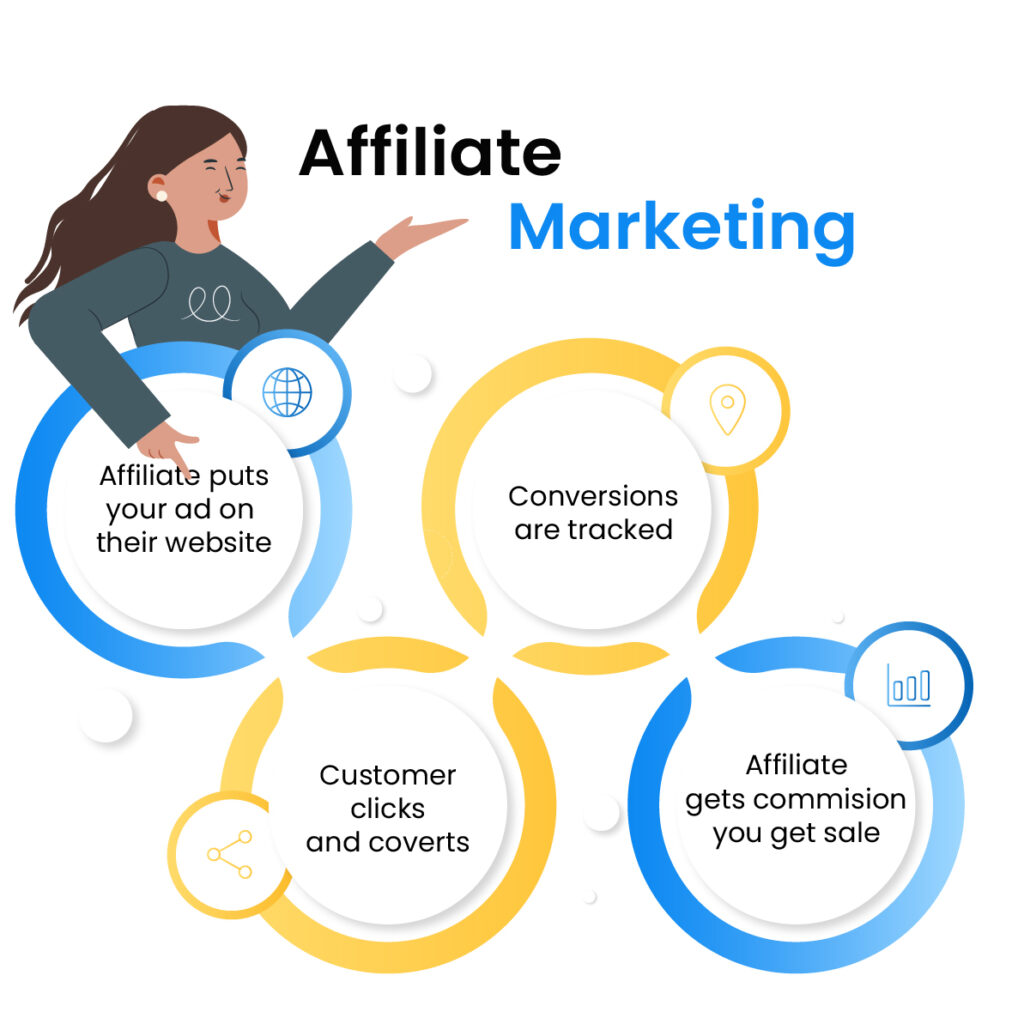Do you know what makes today affiliate marketing more challenging than ever before?
The three-headed dragon:
- Content shock.
- Short attention span.
- Distrust and disregard of brand content and ads.
People don’t trust brands. They don’t like marketers. Recommendations from friends and feedback from other users remain the most credible form of advertising for 92% of consumers. With that in mind, affiliates have to wrestle with a subject:
Are there any alternative strategies to consider for generating leads to clients and, therefore, better sales to themselves?
Crowd marketing is what can help
This strategy at the intersection of SEO and marketing lies in brand-building and its ambassadorship with the help of UGC (user-generated content). In plain English, marketers go to forums and Q&A websites to communicate with their target audience in comments. They do that under the character of average users, sharing feedback, links, and positive reviews on a distribution brand.
Crowd marketing is among the most controversial strategies. Some consider it nothing but link building with spammy comments; others argue it’s a great instrument to communicate with the audience, monitor online reputation, and work with negative feedback. Given that comments influence users’ decision-making more than sales copies and ads do, crowd marketing may be the best tactic to get into a consumer’s ear.
What are its benefits for your affiliate marketing campaign?
- Leads: consumers trust comments and user reviews, so they will follow recommendations and go to your client’s website.
- Traffic: consumers will more likely click the link from a positive comment to check what’s in there.
- Quality: forum moderators will hardly post low-quality or spammy links, so you’ll build only natural ones with crowd marketing.
- Security: Google will not ban you for these links, as they are all natural.
That’s well and fine, but how to use crowd marketing so it would work for better affiliate sales?

Principles Of Crowd Marketing For Affiliates
At bottom, crowd marketing creates a stimulus. Comments and positive feedback encourage consumers to try your product or service, while you interact with the target audience, focus on their needs, develop your brand accordingly, and guide consumers in your direction.
That’s how it works step by step:
- You research online communities and forums where your target audience meets, asks questions, and discusses problems.
- You register a user account there to join the conversation.
- You examine users problems your product/service might help to solve, and brainstorm ideas on how exactly it can do that.
- You comment on corresponding threads with relevant tips and links, therefore helping consumers.
- You take part in communication there, answer questions users might have on your comment, examine the reaction to your product/service, and manage it accordingly.
Often, crowd marketers don’t join but create threads about a distribution brand. Such posts engage users, they start communicating thoughts on it and invite others to take part in the discussion.
Content marketers manage communication on social media, reviews websites, blogs, thematic forums, competitors comments, and Q&A websites.
Crowd Marketing Strategies: Which One To Choose?

Since this instrument includes both SEO and marketing aspects, strategies for successful affiliate crowd marketing are many. Depending on your client’s goals, you can choose the most suitable one for your campaign:
Classic Crowd Marketing
Goal: help consumers with expert advice, draw their attention to a distribution brand, and get a traffic-generated link to your project.
Process: choose the best pages/products/services at a distribution website, find relevant forums and threads, create accounts there, write an expert answer to their question, and reply comments.
Results: awareness and trust growth, referral traffic, natural links, lead generation and sales.
Strong Link Profile Creation
Goal: get more traffic and diverse backlinks.
Process: find relevant forums and comments, register, write an expert answer to a user’s question, and put a link to a desired page there.
Results: a dynamic link profile, visibility and traffic growth.
Competitors Overtaking
Goal: get backlinks from the domains your competitors have conquered already.
Process: examine backlinks profile of your top three competitors, find forums/threads/comments where they are present, make a list of desired resources, register there, and start your affiliate crowd marketing campaign.
Results: a rich backlink profile, visibility, better ranks.
Content Distribution
Goal: share comprehensive and plagiarism-free content with the audience, get more organic search, backlinks, and sales.
Process: create engaging content (video, infographic, ultimate guides, etc.), choose the best and most relevant distribution channels, stay active (comment on other threads, ask and answer questions), and share your content there.
Results: loyalty and trust, traffic, natural backlinks, leads.
Reputation Management
Goal: minimize risks of getting negative feedback on your project.
Process: come up with brand positioning, create accounts at top resources in the niche, grow your expert presence there, build a positive reputation of your project.
Results: brand awareness and trust, its positive context in the eyes of consumers, leads, sales.

How To Organize Crowd Marketing If You’re An Affiliate
Like any other instrument, crowd marketing takes time and money. To succeed and get more affiliate sales, you need to decide on the best option for this strategy realization.
Options are three:
- You can organize and do everything on your own.
- You can hire freelancers or outsourced specialists.
- You can assign crowd marketing campaigns to your in-house team.
What are pros and cons here?
Working alone is time- and energy-consuming. Also, you need strong SEO and copywriting skills to do everything the best possible. It’s challenging to organize the process for a broad market coverage: it takes time to get the point, learn from mistakes, and build an appreciable quantity of links. When hiring freelancers, get ready to spend time on searching and interviewing them. It’s not that easy to find a specialist, so think about interview questions to ask. Outsourced workers are not as expensive as in-house ones, but there are no guarantees they will work in line with your expectations. Check resumes and portfolio carefully to save time and money in the future.
If you decide to do crowd marketing with an in-house team, pros are clear: maximum engagement, flexibility, and efficiency control. But you’ll have to spend resources on employees training, office rent, equipment, and salaries.
Conclusion
Crowd
marketing is worth trying for your affiliate sales campaign if you do the work
for a long run and are ready to spend 3–4 months before you start getting
results.
Your affiliate marketing will succeed from this tactic if you forget the “more
is better” principle and write informative and useful messages at high-quality
niche resources to answer visitors’ questions and help them solve problems.
Most consumers trust comments and reviews from friends, so be that
friend who helps to chose the product/service they need.
“`
“`Share this article
How To Find Affiliates to Sell Your Products
Discover over 10 successful strategies for finding high-quality affiliates in 2024 to boost your product sales. Learn to leverage influencers, join affiliate networks, and enhance your reach through SEO and social media. Maximize revenue with transparency and ongoing monitoring in your affiliate marketing program.
9 affiliate marketing tools that’ll help you run your affiliate program
Discover 9 essential tools to supercharge your affiliate marketing program! From visual content creation with Visme to comprehensive management with Post Affiliate Pro and audience insights via Smartlook, these tools will boost your sales and refine your strategy. Dive in to maximize your affiliate success!









